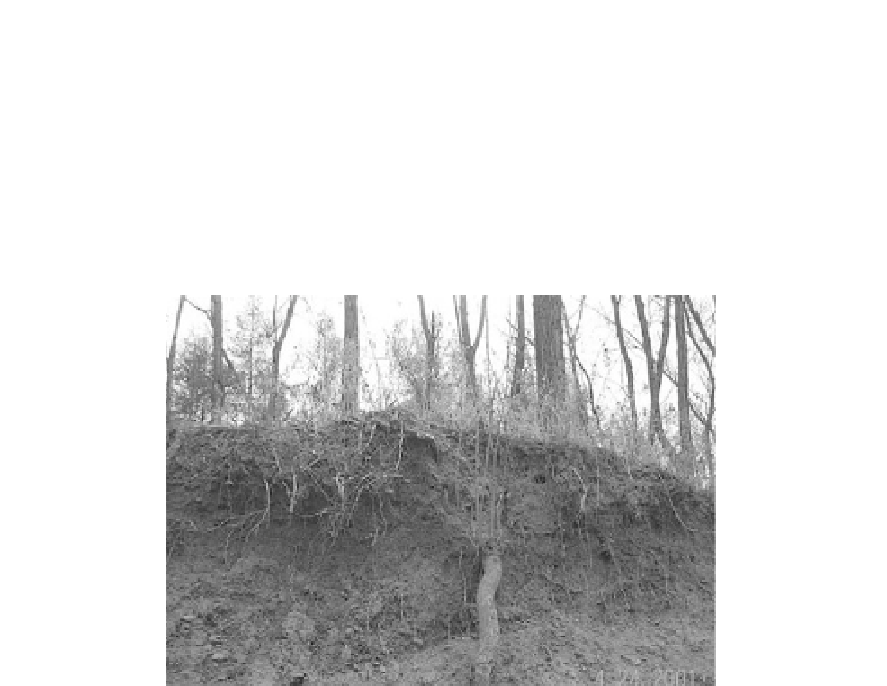Environmental Engineering Reference
In-Depth Information
Incision typically lowers the alluvial water table, because the channel determines the level down to
which the alluvial groundwater drains. As the channel lowers, the alluvial water table migrates
downward as well. Lowering of the alluvial water table directly results in loss of groundwater storage. In
some cases, wells can be lowered and water pumped from greater depths, increasing water costs
significantly. Along the lower Drome River an estimated 6x10
6
m
3
of groundwater storage has been lost
because of incision of 3 to 5 m since 1960 (SOGREAH, 1991). Similarly, along a 18 km reach of the
Enza River, Italy, an estimated 1.4
u
l0
6
m
3
of groundwater storage was lost in 25 years due to incision
(Tagliavini, 1978).
Fig. 3.46
Dying riparian forest in northeastern China. Incision has resulted in a drop of the water table below the
root zone of the trees
Lowering of the alluvial water table can induce profound ecological and landscape changes, including
the loss of riparian vegetation as the water table and capillary fringe drop below the root zone of riparian
plants. In northeast China, lowering of the water table by channel incision induced extensive mortality of
juvenile woods (Fig. 3.46). The character of the landscape can change as riparian corridors disappear
from desert landscapes.
3.4.2
Incision Control Strategies
3.4.2.1
Control Strategies
Channel incision essentially results from high flow velocity and insufficient bed load. Therefore, there
are two kinds of strategies to control incision:
ķ
enhance the bed resistance to reduce the flow velocity;
and
ĸ
increase bed load. Humans can intervene and prevent channel incision by utilizing a variety of
channel stabilization procedures. Channel deepening may cease as a result of geologic controls or
geomorphic changes, but climatic, hydrologic, and animal changes will probably only change the rate at
which the channel evolves. Table 3.7(a) provides a review of control strategies enhancing resistance, and
Table 3.7(b) lists the strategies to increase bed load. They are not comprehensive but rather the table
presents a framework through which the reader can approach the problem of remediation of the effects of
incision.
The process of incision can cause the channel to encounter bedrock and resistant alluvium. This
material will greatly reduce or halt incision, and the concentration of coarse sediments can cause armoring
of the channel bed, which can halt incision. In addition, the type of sediment in the alluvial valley

Search WWH ::

Custom Search